Nylon
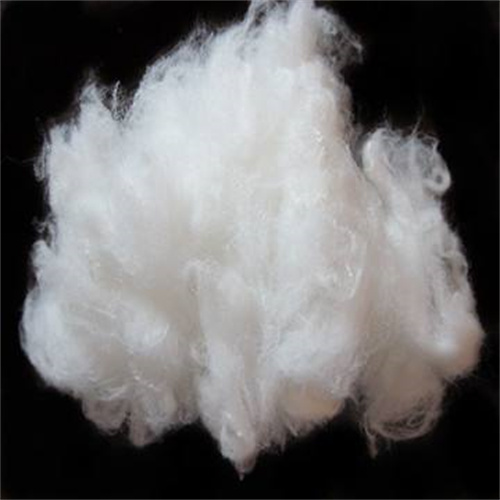
Polyester
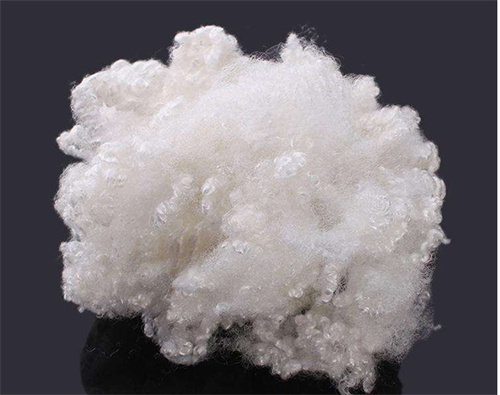
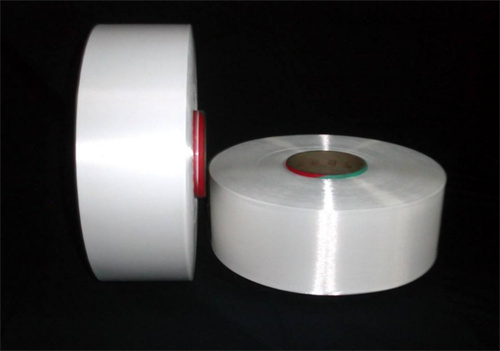
It is one of the new types of polyester fabrics. It uses fine denier or ultra-fine denier polyester fibers as raw materials and is specially processed to form a fine short-pile polyester suede fabric on the fabric base fabric. It is called an imitation deerskin fabric. It is generally a non-woven fabric. , Woven fabrics and knitted fabrics are base fabrics. It has the style characteristics of soft texture, fine and dense fluff, plump and elasticity, rich hand feeling, firmness and durability. There are three common ones: artificial high-quality deerskin, artificial high-quality deerskin and artificial ordinary deerskin. Suitable for women's clothing, high-end dresses, jackets, suit tops, etc.
Acrylic
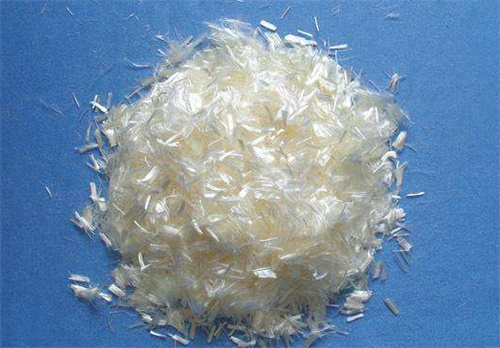
1. Definition of acrylic fiber
Acrylic fiber is the name of polyacrylonitrile fiber in my country. DuPont of the United States is called Orlon, and its transliteration is called Orlon. This fiber is light, warm, and soft to the touch. It has the reputation of "synthetic wool".
2. The performance of acrylic fiber
Acrylic fiber is known as synthetic wool, and its elasticity and bulkiness are similar to natural wool. Therefore, the warmth retention of its fabric is not inferior to that of wool fabrics, and is even about 15% higher than similar wool fabrics.
Acrylic fabric is dyed brightly, and its light fastness is the first of all fiber fabrics. But its abrasion resistance is the worst among various synthetic fiber fabrics. Therefore, acrylic fabric is suitable for outdoor clothing, swimwear and children's clothing.
Acrylic fabric has poor moisture absorption, is easy to stain, and feels stuffy when worn, but its dimensional stability is better.
Acrylic fabric has good heat resistance, ranking second in synthetic fibers, and is resistant to acids, oxidants and organic solvents, and is relatively sensitive to the effects of alkalis.
Acrylic fabric is a lighter fabric in synthetic fabrics, second only to polypropylene, so it is a good light clothing material, such as mountaineering suits, winter warm clothing, etc.
Varieties of acrylic fiber:
1. Pure acrylic textiles are made of 100% acrylic fibers. For example, the worsted acrylic women's woolen fabric processed with 100% wool-type acrylic fiber has the characteristics of loose structure, its color is bright, the hand feels soft and elastic, the texture is not loose and not rotten, and it is suitable for making middle and low-end women's clothing. Using 100% acrylic bulked yarn as raw material, acrylic bulked overcoats with plain or twill weave can be made. It has the characteristics of full-feeling, warm and easy wool fabric, suitable for making spring, autumn and winter coats, casual clothes, etc.
2. Acrylic blended fabric refers to a fabric blended with wool or medium-length acrylic and viscose or polyester. Including nitrile/viscose gabardine, nitrile/viscose women’s cloth, nitrile/polyester tweed, etc. Nitrile/viscose gabardine, also known as oriental cloth, is blended with nitrile and viscose each accounting for 50%. It has a thick and compact body, strong and durable, and has a smooth, soft, wool-like gabardine style, but it has poor elasticity. Easy to wrinkle, suitable for making cheap pants. The nitrile/viscose women’s woolen cloth is a blend of 85% acrylic and 15% viscose. It is mostly woven with crepe weaves. The surface is slightly raised, bright in color, light and thin, good durability, poor resilience, and suitable for making coat. Nitrile/polyester tweed is blended with 40% and 60% of nitrile and polyester. Because they are mostly processed with plain and twill weaves, they have the characteristics of flat appearance, firmness and non-ironing, but the disadvantage is poor comfort. Therefore, it is mostly used for the production of mid-range clothing such as outerwear and suits.
3. Modification of acrylic fiber
The fine-denier acrylic fiber is spun from a microporous spinneret made by high-tech means. Fine-denier acrylic fiber can be spun into high-count yarn. The fabric produced is smooth, soft, delicate and soft in color. At the same time, it has fine fabrics, light and silky, good drape, and anti-pilling. It is imitation cashmere and imitation. One of the main raw materials of silk is in line with the new trend of clothing in the world today.
There are two kinds of cashmere-like acrylic fibers: short fiber and top. It has the smooth, soft and elastic feel of natural cashmere, good warmth retention and air permeability, and excellent dyeing performance of acrylic fiber, making acrylic cashmere products more colorful and beautiful, smooth and smooth, suitable for light and thin clothing, cheap and good quality .
The online dyeing methods of polyacrylonitrile fiber mainly include liquid dyeing and gel dyeing. Among them, the gel dyed fiber dyes the nascent fiber which is still in the gel state in the acrylic wet spinning process, and the dyes used are mainly cationic dyes. As a large-quantity and wide-ranging product, gel-dyed fiber has the advantages of saving dyes, short process and dyeing time, low energy consumption, and low labor intensity compared with traditional printing and dyeing processes.
Special-shaped fiber is made by using special-shaped spinneret holes and changing process conditions. The fiber style is unique, the simulation effect is good, and the product grade is improved. The profiled acrylic fiber with a flat cross-sectional shape is referred to as flat acrylic fiber. Flat acrylic fiber is similar to animal hair. It has characteristics in gloss, elasticity, anti-pilling, bulkiness and hand feeling, and can play a unique effect of imitating animal skin.
The antibacterial moisture conductive acrylic fiber is made of high-tech Chitosante activator. The fabric made has antibacterial, anti-mildew, deodorant, skin care, moisture absorption, softness, antistatic, plump, anti-wrinkle and other functions. Because Chitosante is permanently bonded to the fiber through adsorption, penetration, fixation, linkage, etc., it does not require resin bonding and has excellent washing resistance. After testing, the fabric can still maintain excellent antibacterial ability after strong washing for 50 times. Without the side effects of polluting the environment and human body, it has created a natural, fresh, clean, hygienic, healthy and comfortable functional clothing effect. It is a new generation of acrylic fiber product with multiple functions.
The antistatic acrylic fiber can improve the electrical conductivity of the fiber, which is beneficial to the post-weaving processing, and the antistatic fiber can improve the pilling, staining and adhesion of the fabric to the skin. No adverse side effects to the human body.
Acrylic fiber is also called cashmere, and its character is very similar to wool. People call it "synthetic wool". It is polymerized with acrylonitrile. Acrylic is fluffy, soft and elastic, and its thermal insulation performance is better than wool. The strength of acrylic is 1 to 2.5 times higher than that of wool, so "synthetic wool" clothes are more durable than natural wool clothes. Acrylic is resistant to sunlight, heat, can be ironed, and light in weight, these are its advantages. However, acrylic has poor hygroscopicity, cannot absorb moisture, and gives people a feeling of sultry and uncomfortable heat. It also has a fatal weakness, that is, poor abrasion resistance. The main purpose of acrylic short fiber is to make all kinds of woolen textiles, such as bulky yarn, acrylic and wool blended yarn, etc. There are also various colors of acrylic women's woolen cloth, acrylic and viscose blended cloth, acrylic and nylon tweed and so on. It can also produce acrylic artificial fur, lun long plush, lun camel hair and other products. Lun cotton type staple fiber can be spun into various knitted products, such as sportswear and so on.
Acrylic fiber is the trade name of polyacrylonitrile fiber in my country, but it is called "Aulon" and "Cashmiron" abroad. Usually refers to the synthetic fiber made by wet spinning or dry spinning with more than 85% acrylonitrile copolymer with the second and third monomers. Fibers made by spinning copolymers with acrylonitrile content between 35% and 85% are called modified polyacrylonitrile fibers.
The main production process of acrylic fiber: polymerization → spinning → preheating → steam drawing → washing → drying → heat setting → crimping → cutting → packing.
The performance of polyacrylonitrile fiber is very similar to wool. It has good elasticity. The resilience rate can still be maintained at 65% when elongation is 20%. It is fluffy and soft, and its warmth retention is 15% higher than that of wool. It is called synthetic wool. The strength is 22.1~48.5cN/dtex, which is 1~2.5 times higher than wool. It has excellent light fastness, and its strength is only reduced by 20% when exposed to the open air for one year. It can be made into curtains, curtains, tarpaulins, gun clothing, etc. It is resistant to acids, oxidants and general organic solvents, but has poor alkali resistance. The fiber softening temperature is 190~230℃.
Acrylic fiber is called artificial wool. It has the advantages of softness, bulkiness, easy dyeing, bright color, light resistance, antibacterial, not afraid of insects, etc. It can be spun purely or blended with natural fibers according to the requirements of different uses. Its textiles are widely used in clothing, decoration, industry, etc. field.
Polyacrylonitrile fiber can be blended with wool to form wool, or woven into blankets, carpets, etc., and can also be blended with cotton, man-made fibers, and other synthetic fibers to be woven into various clothing and interior products. The bulky wool top processed by polyacrylonitrile fiber can be spun purely or blended with viscose fiber and wool to obtain various specifications of medium thick wool and fine wool "cashmere".
People have made polyacrylonitrile as early as more than 100 years ago, but because there is no suitable solvent, they have not been able to make fibers. In 1942, German H. Rein and American G.H. Latham discovered dimethylformamide solvent almost simultaneously and successfully obtained polyacrylonitrile fiber. In 1950, DuPont of the United States first carried out industrial production. Later, a variety of solvents were discovered and a variety of production processes were formed. In 1954, Fabien Bayer in the Federal Republic of Germany used the copolymer of methyl acrylate and acrylonitrile to make fibers, which improved fiber performance, improved practicability, and promoted the development of polyacrylonitrile fibers. In 1984, the world production of polyacrylonitrile fiber was 2.4Mt.
4. Production method
Polyacrylonitrile fiber requires high purity of raw material acrylonitrile, and the total content of various impurities should be less than 0.005%. The second monomer to be polymerized is mainly methyl acrylate, but also methyl methacrylate. The purpose is to improve the spinnability and fiber feel, softness and elasticity; the third monomer is mainly to improve the dyeability of the fiber, generally Itaconic acid with weak acid dyeing group, sodium propylene sulfonate, sodium methacrylate sulfonate, sodium p-methacrylamide benzene sulfonate with strong acid dyeing group, -methyl with alkaline dyeing group Vinylpyridine and so on.
Acrylic fiber is the trade name of polyacrylonitrile fiber in my country. Acrylic fiber has excellent properties and is called "synthetic wool" because its properties are close to wool. Since industrial production in 1950, great development has been achieved. In 1996, the world's total acrylic fiber output was 2.52 million tons, and my country's output was 297,000 tons. In the future, my country will vigorously develop acrylic fiber production. Although acrylic fibers are usually called polyacrylonitrile fibers, acrylonitrile (usually called the first monomer) accounts for only 90% to 94%, the second monomer accounts for 5% to 8%, and the third monomer accounts for 0.3% to 2.0. %. This is because the fiber made of a single acrylonitrile polymer lacks flexibility, is brittle, and is very difficult to dye. In order to overcome these shortcomings of polyacrylonitrile, people use the method of adding a second monomer to make the fiber soft; adding a third monomer to improve the dyeing ability.
Acrylic production
The raw material of acrylic fiber is cheap propylene produced by petroleum cracking: because polyacrylonitrile copolymer only decomposes and does not melt when heated above 230C, it cannot be melt-spinned like polyester and nylon fibers, but solution spinning Silk method. Spinning can be dry or wet. The dry spinning speed is high and suitable for spinning imitation silk fabrics. Very spinning is suitable for making short fibers, fluffy and soft, and suitable for making wool-like fabrics.
5. The performance and use of acrylic fiber
Elasticity: Its elasticity is better, second only to polyester and about 2 times higher than nylon. Has good shape retention.
Strength: Although the strength of acrylic fiber is not as good as polyester and nylon, it is 1 to 2.5 times higher than wool.
Heat resistance: The softening temperature of the fiber is 190-230C, second only to polyester among synthetic fibers.
Light resistance: The light resistance of acrylic fiber is the best of all synthetic fibers for one year of outdoor exposure, and the strength is only reduced by 20%.
Acrylic fiber is resistant to acids, oxidants and general organic solvents, but it is not resistant to alkalis. Acrylic finished products have good bulkiness, good warmth retention, soft hand feel, good weather resistance, mildew and moth resistance. The warmth retention of acrylic fiber is about 15% higher than that of wool. Acrylic fiber can be blended with wool, and the products are mostly used for civilian purposes, such as wool, blankets, knitted sportswear, tarpaulins, curtains, artificial fur, plush, etc. Acrylic fiber is also the raw material for high-tech products-carbon fiber.
Chlorine
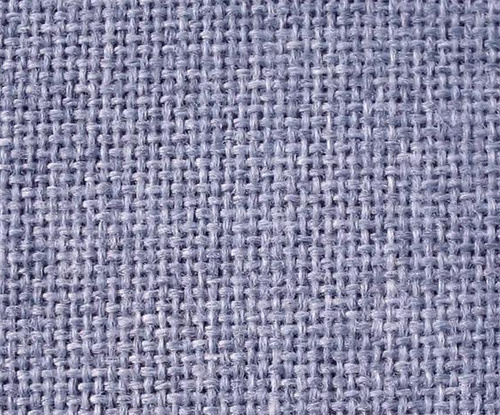
Although polyvinyl chloride is the largest variety of plastics, it was not until the solvent problem required for solution spinning was solved and the thermal stability of the fiber was improved that the polyvinyl chloride fiber had a greater development. Because of its abundant raw materials, simple process, low cost, and special purpose, it has a certain position in synthetic fibers. Although polyvinyl chloride can be melt-spinned after being mixed with plasticizers, most of them still use acetone as the solvent and solution-spinning to prepare polyvinyl chloride.
1. Outstanding advantages of chlorinated fiber
It is flame-retardant, warm, light fast, abrasion resistant, corrosion resistant and moth-resistant, and has good elasticity. It can be used to manufacture all kinds of knitwear, work clothes, blankets, filter cloth, chenille, tents, etc., especially because of its good warmth retention , Easy to produce and maintain static electricity, so knitted underwear made with it has a certain effect on rheumatoid arthritis. However, due to poor dyeability and large heat shrinkage, its application is limited. The way to improve is to copolymerize with other fiber varieties (such as vinylon) or mix with other fibers (such as viscose fiber) for emulsion blending spinning.
The shortcomings of polychlorin are also more prominent, that is, extremely poor heat resistance.
2. Chlorine fiber classification
Short fibers, filaments and bristles, etc. Chlorine staple fiber can be made into cotton, wool and knitted underwear, etc. These fabrics have a certain care effect on people suffering from rheumatoid arthritis. In addition, polychlorin can be processed into flame-retardant textiles with various special purposes, such as sofas and safety tents. Chlorine fiber can also be used as industrial filter cloth, work clothes, insulating cloth and so on.
3. Forms of expression
Form Chlorine fiber has a smooth longitudinal surface or 1-2 grooves, and its cross-section is close to circular.
Combustion performance Chlorine fiber contains a large number of chlorine atoms in its molecules, so it is flame retardant. Chlorine fiber will be extinguished immediately after leaving the open flame. This performance has a special purpose in national defense.
Strength and elongation: The strength of polyvinyl chloride is close to that of cotton, the elongation at break is greater than that of cotton, the elasticity is better than that of cotton, and the abrasion resistance is also stronger than that of cotton.
Hygroscopicity and dyeability Chlorine fiber has very little hygroscopicity and almost does not absorb moisture. However, it is difficult to dye chlorine fiber, and it can only be dyed with disperse dyes.
Chemical stability Chloride fiber has excellent resistance to acids and alkalis, oxidizing agents and reducing agents. Therefore, polychloride fabric is suitable for industrial filter cloth, work clothes and protective equipment.
Warmth retention, heat resistance, etc. Chlorine fiber is light in weight and has good warmth retention. It is suitable for working clothes in humid environments and field workers. In addition, chlorinated fiber has strong electrical insulation, is easy to generate static electricity, and has poor heat resistance. It starts to shrink at 60-70°C and decomposes at 100°C. Therefore, you must pay attention to the temperature when washing and ironing.
Main features and differences
01. Viscose (moisture absorption and easy staining)
It is man-made cellulose fiber, which is made by solution spinning. Because the coagulation rate of the fiber core layer and the outer layer are inconsistent, a skin-core structure is formed (which can be clearly seen from the cross-sectional slice). Viscose is the most hygroscopic among ordinary chemical fibers. It has good dyeability, good wearing comfort, poor elasticity, strength in wet state, and poor abrasion resistance. Therefore, viscose is not washable and has poor dimensional stability. The proportion is heavy, the fabric is heavier, and it is alkali-resistant but not acid-resistant.
Viscose fiber has a wide range of uses. Almost all types of textiles use it, such as filaments as linings, beautiful silks, flags, streamers, tire cords, etc.; short fibers are used as cotton-like, wool-like, blended, interwoven, etc.
02. Polyester (stiff and not wrinkled)
Features: high strength, good impact resistance, heat resistance, corrosion resistance, moth resistance, acid and alkali resistance, good light resistance (second only to acrylic), 1000 hours of exposure, strong retention of 60-70%, poor moisture absorption , Dyeing is difficult, the fabric is easy to wash and dry, and has good shape retention. It has the characteristics of "washable and wearable".
Purpose:
Filament: often used as low-stretch yarn to make various textiles;
Staple fiber: cotton, wool, linen, etc. can be blended. Industrial: tire cord, fishing net, rope, filter cloth, insulation material, etc. It is currently the largest amount of chemical fiber.
03. nylon (strong and wear-resistant)
The biggest advantage is that it is strong and wear-resistant, which is the best one. Low density, light fabric, good elasticity, fatigue resistance, good chemical stability, alkali and acid resistance!
The biggest disadvantage is that the sun resistance is not good, the fabric will turn yellow after long exposure, the strength will decrease, and the moisture absorption is not good, but it is better than acrylic and polyester.
Uses: filaments are mostly used in knitting and silk industries; staple fibers are mostly blended with wool or wool-type chemical fibers for gabardine, vanidine, etc. Industry: cords and fishing nets, but also used as carpets, ropes, conveyor belts, screens, etc.
04.acrylic fiber (bulky and light fast)
The performance of acrylic fiber is very similar to wool, so it is called "synthetic wool".
Molecular structure: Acrylic fiber is unique in the internal structure of Oita, showing an irregular spiral conformation, and there is no strict crystallization area, but there are high-order and low-order arrangements. Because of this structure, acrylic fiber has good thermal elasticity (processable bulked yarn), acrylic fiber has a low density, which is smaller than wool, and the fabric has good warmth retention.
Features: Good sunlight and weather resistance (ranking first), poor moisture absorption, and difficult to dye.
Pure acrylonitrile fiber has a tight internal structure and poor wearability. So by adding the second and third monomers, its performance is improved. The second monomer improves: elasticity and feel, and the third monomer improves dyeability.
Uses: Mainly used for civilian use. It can be pure or blended to make a variety of wool, wool, blankets, sportswear, and also: artificial fur, plush, bulked yarn, hose, parasol cloth, etc.
05. vinylon (water soluble moisture absorption)
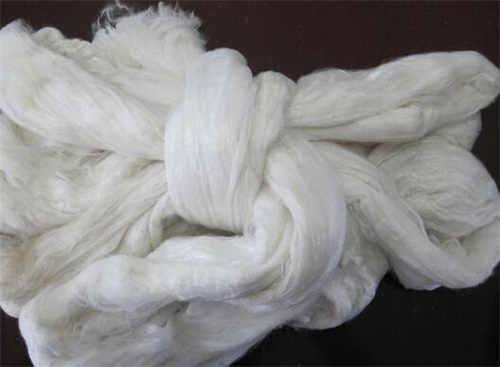
The biggest feature is the high moisture absorption, the best synthetic fiber, known as "synthetic cotton". The strength is worse than that of nylon and polyester, and it has good chemical stability. It is not resistant to strong acids and alkalis. Sunlight resistance and weather resistance are also very good, but it is resistant to dry heat but not to damp heat (shrinkage), the elasticity is the worst, the fabric is easy to wrinkle, dyeing is poor, and the color is not bright.
Uses: Multi-cotton blending: muslin, poplin, corduroy, underwear, canvas, tarpaulin, packaging materials, work clothes, etc.
06. Polypropylene (lightweight and warm):

PP
Polypropylene fiber is the lightest fiber among common chemical fibers. It hardly absorbs moisture, but has good wicking ability, high strength, stable fabric size, good abrasion resistance and good chemical stability. But: poor thermal stability, not sun-resistant, easy to aging and brittle damage.
Uses: Can knit socks, mosquito nets, quilts, warm fillers, wet diapers, etc. Industrial: Carpets, fishing nets, canvases, hoses, medical tapes instead of cotton gauze, used as sanitary products.
07. spandex (elastic fiber):
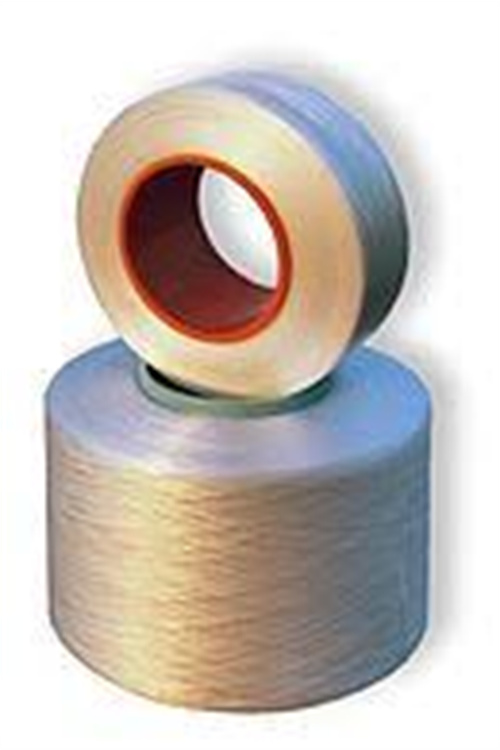
It has the best elasticity, the worst strength, poor moisture absorption, good light resistance, acid resistance, alkali resistance, and abrasion resistance.
Uses: Spandex is widely used in underwear, women's underwear, casual wear, sportswear, socks, pantyhose, bandages, etc. in the textile field, medical field, etc. based on its characteristics. Spandex is a highly elastic fiber necessary for high-performance clothing that is dynamic and convenient. Spandex can stretch 5-7 times than its original shape, so it is comfortable to wear, soft to the touch, and wrinkle-free, and it can always maintain its original contour.